Apple iPhone 7 review: The last-gen iPhone still holds its own
Editors’ note (Sept. 12, 2018): The iPhone 7 reviewed here is now available at a reduced price of $449. See all of the new iPhones and new products that Apple just announced.
Mục Lục
The Good
The iPhone 7 still has the biggest key features you’d want: a fast processor, water resistance, a more durable solid-state home button, and still really good cameras with rear optical image stabilization. iOS 12 should help this phone perform even better than on iOS 11.
The Bad
Lacks the extra speed and improved camera quality of the iPhone 8. No fancy Face ID or other iPhone X-type designs, which will likely spread to other iPhones soon in the fall. No headphone jack (an adapter comes in the box). No wireless charging.
The Bottom Line
The gap between iPhone 8 and iPhone 7 isn’t as great as you think, and for the right price, this is still an excellent pick if you’re not chasing the latest bleeding-edge iPhone and want to save some money.
The iPhone 7 is a year and a half old, and will hit two years in September when new iPhones are probably arriving. Where does that leave you, possible iPhone shopper?
The iPhone 7 isn’t a bad place to land if you’re bargain shopping and want the basics, as it starts at only $549 for 32GB. It has a nearly identical physical design to the iPhone 8, water resistance for spills or pool drops, a solid haptic feedback home button…and no headphone jack. The iPhone 7 doesn’t have wireless charging like the iPhone 8 and iPhone X, but does that matter? Lightning works fine.
This could also be the best time to consider older hardware, as Apple’s upcoming iOS 12 software update promises big performance boosts on years-old phones and iPads. The iPhone 7 already has a really good A10 processor, and it could run even better by the fall (when have we ever said that?).
That’s hypothetical for the moment, since we haven’t tested iOS 12 on an iPhone 7 yet. But it means that, if you’re looking for a solid camera and phone, this could be your best budget pick…even ahead of the starting-to-age iPhone SE. The iPhone SE is still cheaper though, starting at $349 for 32GB.
Just be forewarned that this fall, Apple rumors point to the release of up to three iPhones with iPhone X-like notches, Face ID cameras instead of Touch ID home buttons, and maybe a lower-priced model that could slide into where the iPhone 7 currently stands. It all depends on whether you can wait, and if you prefer a home button and fingerprint sensor to a face-unlocking life.
The 7 Plus has the added advantages of a larger screen, a bit better battery, and dual cameras, which add extra zoom and that snazzy depth-of-field Portrait Mode. Those are nice extras, but if you’re already bargain shopping for an iPhone, or want something small, the regular iPhone 7 is just fine.
The full review of the iPhone 7, originally posted November 22, 2016 and last updated March 21, 2017, follows.
Curved wraparound screen? Nope. Wireless charging? Not yet. Are you bothered that the 2016
iPhone
looks the same as its predecessor? If you are, I understand the feeling. The
iPhone 7
doesn’t feel like the “whole new thing.” Does that bother you? Maybe. But is it better? Yeah, it is. Except for one small 3.5-millimeter thing.
The iPhone 7 was released in September, so you’ve certainly heard by now that it has no headphone jack and it looks almost identical to the 2014 iPhone 6 and 2015 iPhone 6S. It’s faster, it’s better — but its successor is likely to be announced in September 2017.
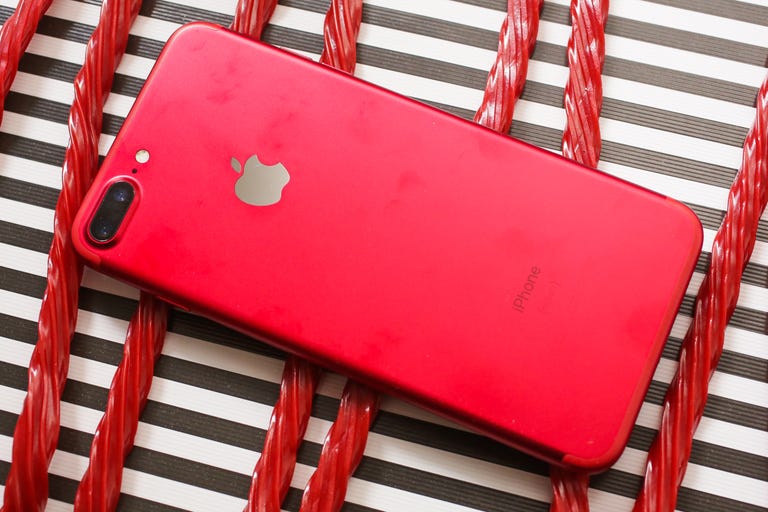
Enlarge Image
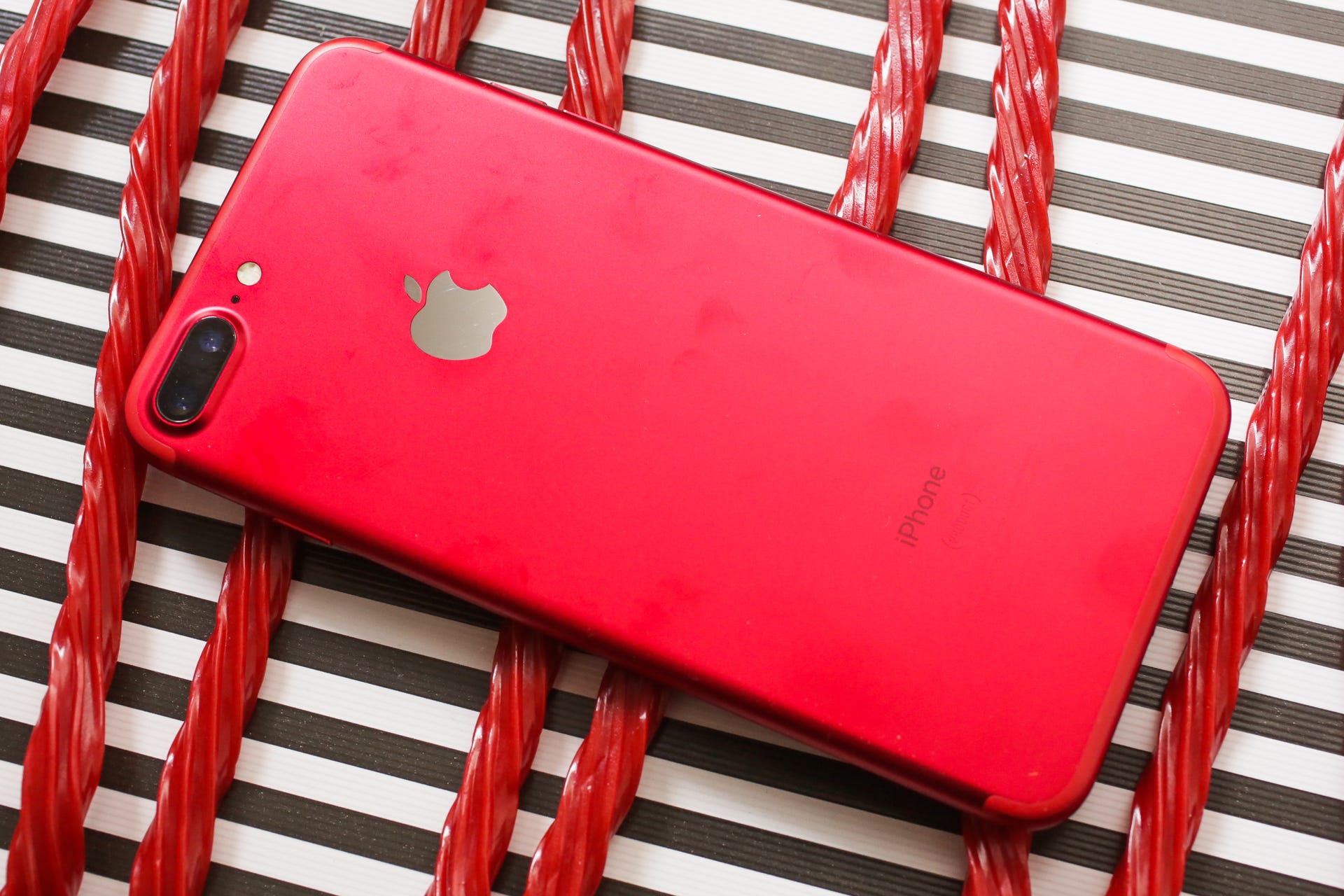
There are plenty of good or even great Android
phones
to choose from now, from the 2017 Samsung Galaxy S8 and OnePlus 5 to the 2016 Google Pixel. The iPhone 7 beats these on speed, but not on battery life. Its size, performance and camera are unique features — along with being a way to use
iOS
, of course — but the iPhone’s unique qualities are, this time, improved in many subtle ways.
But there are still compelling reasons to consider an iPhone 7, even if you own one of those recent iPhone models… provided you have an affordable way to upgrade.
- The iPhone 7 is now fully water-resistant (it can take a shallow dunking).
- The camera takes notably better photos, especially in low light, and adds the optical image stabilization feature previously restricted to the 5.5-inch Plus model.
- The battery lasts a little bit longer — sometimes it’s notable, other times it feels just slightly better than the iPhone 6S.
- The processor is definitely faster, although keep in mind that last year’s iPhone 6S has more than enough speed for most people’s needs.
It’s also got a “wide color gamut” screen with enhanced color accuracy, and enhanced stereo speakers, though I didn’t find those improvements as critical as the ones above. And the home button isn’t “clickable” anymore — it uses the same pressure sensitivity and vibration feedback found on the 3D Touch screen. It works perfectly well, but takes some getting used to because there’s no mechanical click when you press the home button.
As with 2015’s iPhone choices, you can also opt for the step-up iPhone 7 Plus, which offers a larger screen (5.5 inches vs. 4.7 inches). But that model’s big attraction is the dual rear cameras, which enable 2x optical zoom and a cool in-camera “bokeh” effect portrait mode, which blurs the background while keeping the foreground in focus. (That’s the model I’d pick this year, but the 7 Plus is still a handful to hold, and it’s expensive.)
Now, should you wait until September 2017? All the rumors point to
Apple
delivering a major design overhaul for the iPhone’s 10th anniversary — anything from a Galaxy Edge-style wraparound OLED screen to a fingerprint sensor hidden under the screen to wireless charging. It’s tempting. But in the meantime, especially if you want to take advantage of the various retro-contract “free with two-year commitment” offers, know that the iPhone 7 and 7 Plus are worthy, useful upgrades to their predecessors — even if they look almost identical from the outside.
Let’s not diminish the missing jack. The loss will hurt, especially while other iPhones exist that still have a jack onboard. If you want to plug regular into your new iPhone, a process that seemed simple and uncomplicated before, you now need to consider whether you brought the included dongle, or have a pair of Bluetooth headphones. Or your special Lightning headphones that come in the box. But it’s surmountable.
Looking back on the iPhone 7 months after its release, it’s a great phone with a lot of worthwhile improved features, and its water resistance is a solid overdue feature. But, while I’ve moved on to
Bluetooth
headphones most days, I still miss that headphone jack.
Editors’ note: Since this review was posted in September 2016, it has been updated with benchmarks, battery-testing results and new information on competing products. Shoppers should also note that Apple has since unveiled a new edition of its flagship iPhone 7 as part of the Product Red program, which funds programs that combat HIV and AIDS in sub-Saharan Africa. The special editions of the iPhone 7 and iPhone 7 Plus come in 128GB and 256GB configurations, and start at $749 (£699, AU$1,229).
The company has also doubled the storage capacity of its budget iPhone SE, which starts at $399 and is now available with 32GB or 128GB of storage. The company is expected to unveil the next-generation iPhone 8 (and possibly an iPhone 7S and 7S Plus) in September 2017.
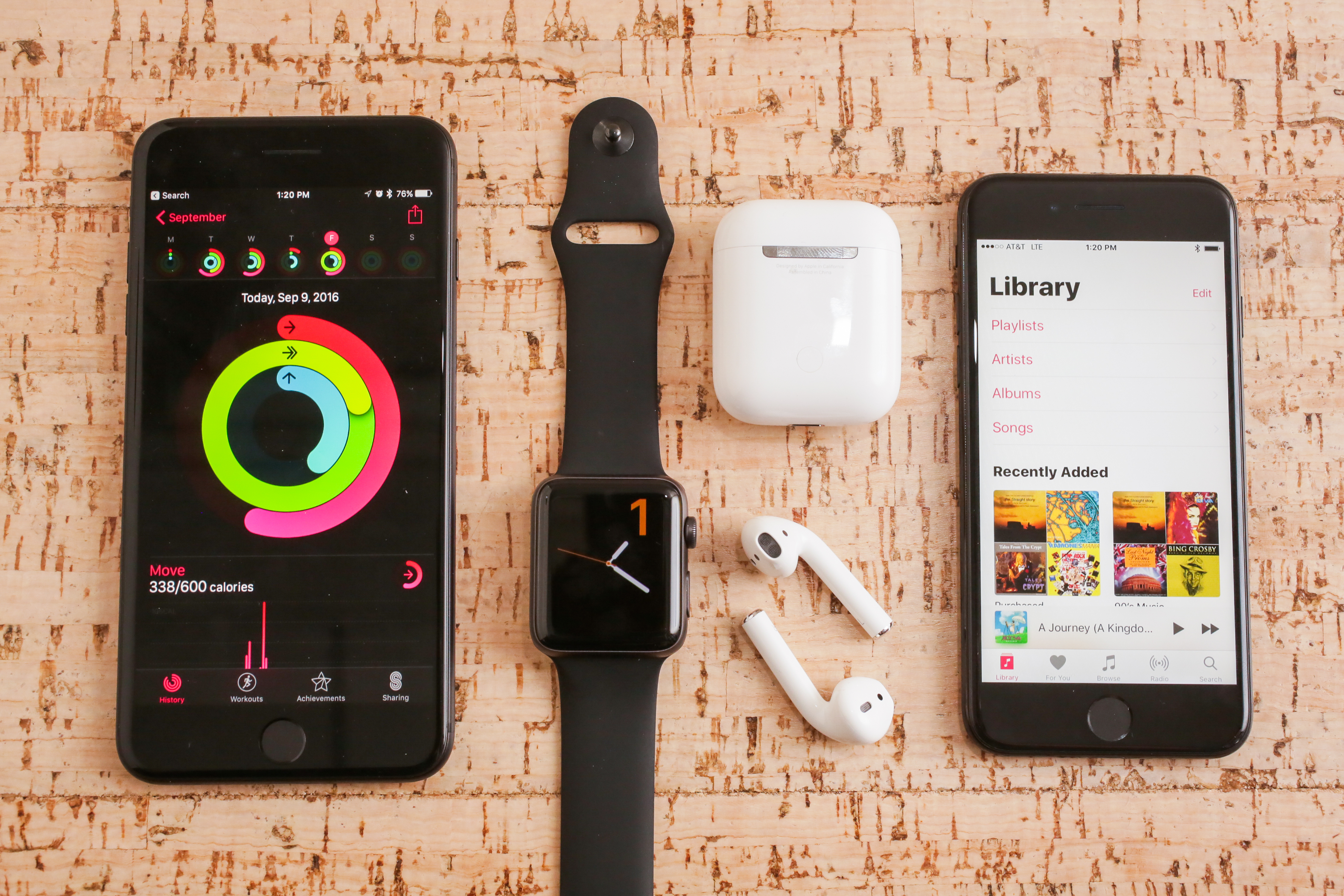
Enlarge Image

Apple’s fall 2016 lineup.
Headphone jackless
To reiterate: Mark me down as someone who misses the headphone jack.
Despite living in a mostly wearable, wireless world, I don’t tend to like Bluetooth headphones. And I also hate dongles. I’m learning to deal with both now. Apple’s new AirPods make a case for how more-advanced Bluetooth mini-earphones could be fun to carry around, and I’ve gotten used to reaching for them over wired headphones. But to me, nothing beats a cheap pair of plug-and-play earphones for lazy convenience.
While some 2017 phones — the HTC U11, the upcoming Essential Phone — have followed the iPhone in ditching the 3.5 mm jack, other competitors, most notably the Samsung Galaxy S8 line, have managed to keep it while maintaining waterproofing to boot.
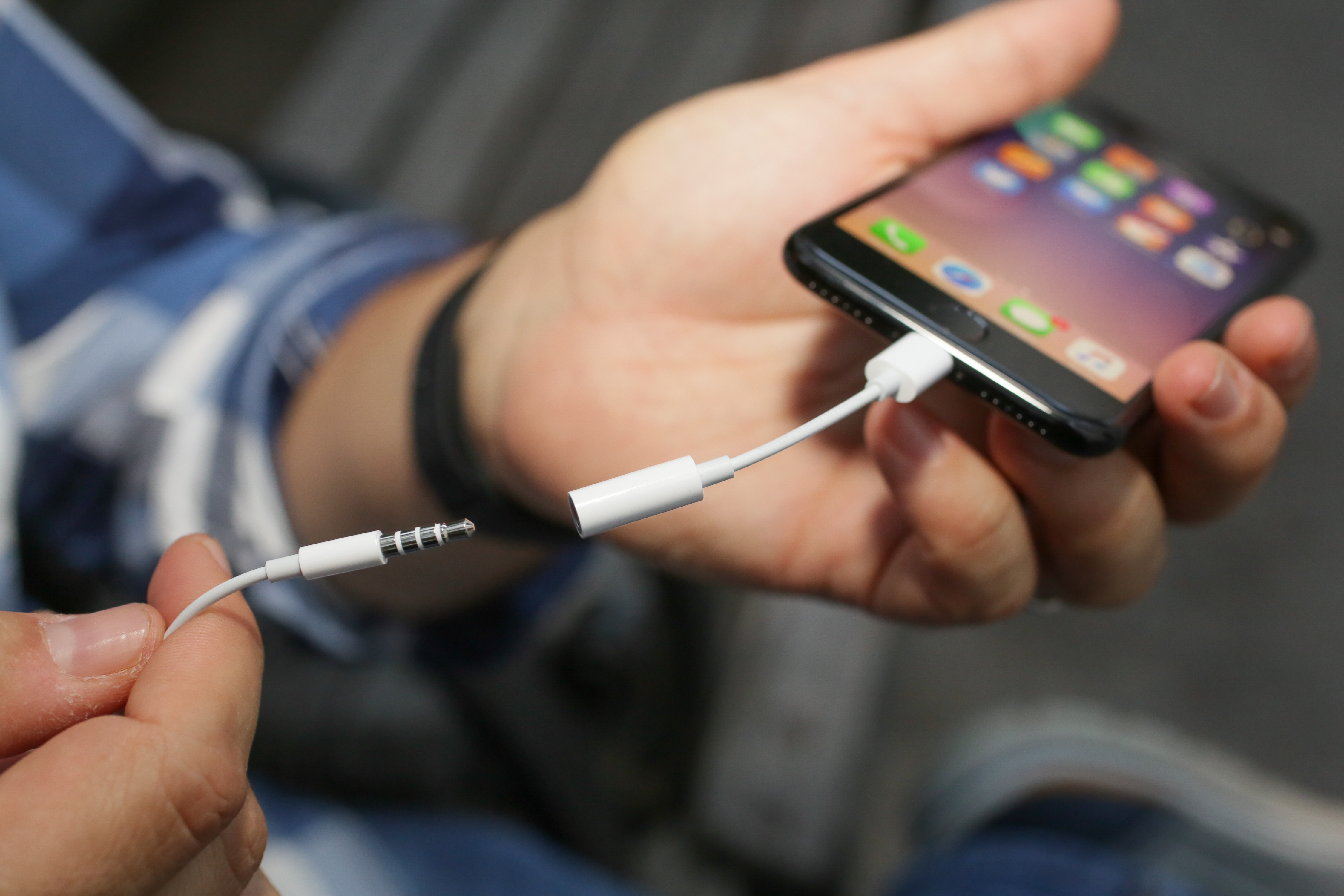
Enlarge Image
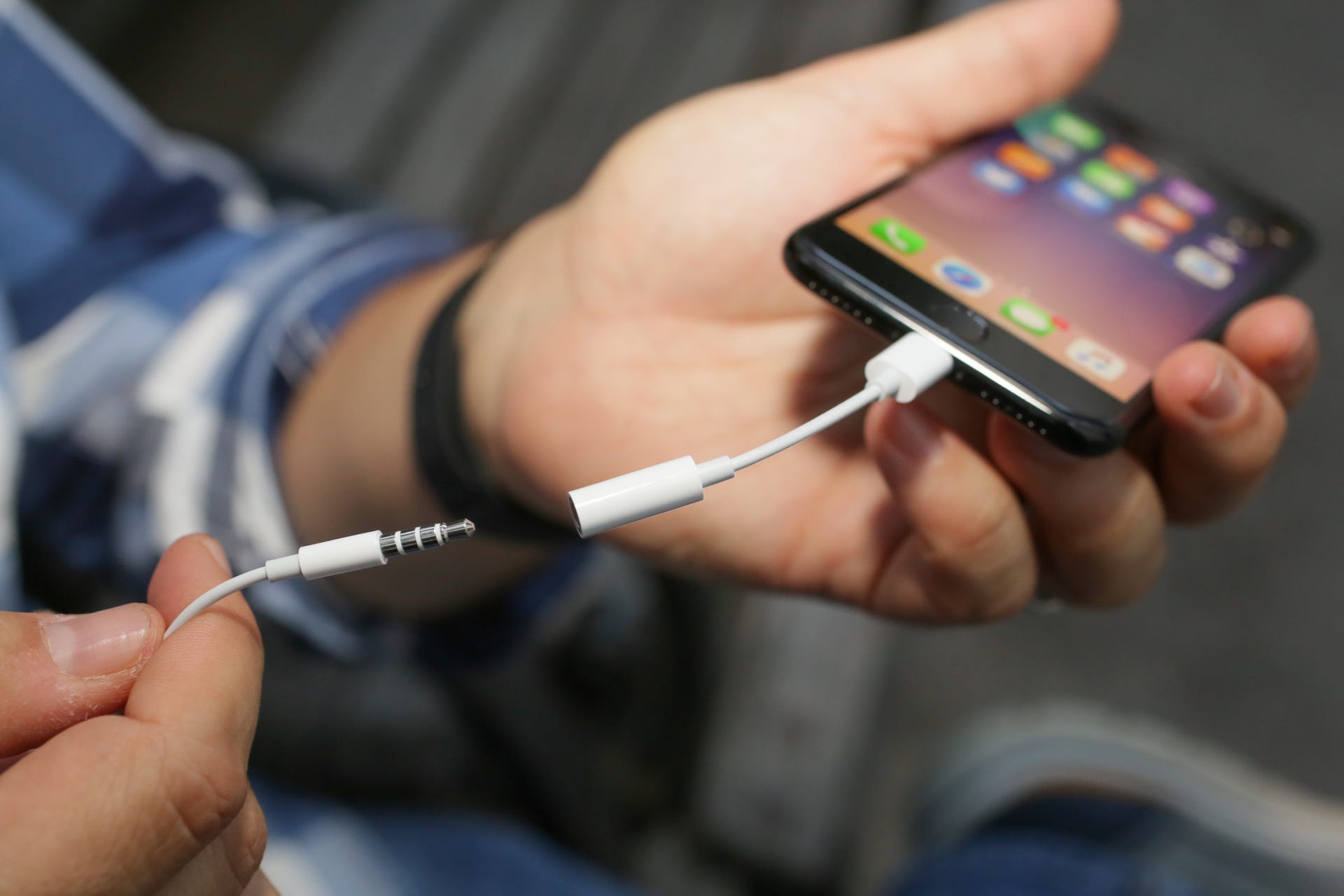
No headphone jack means you’ll have to make do with a dongle.
True, the iPhone 7 gives you a number of options: Get a pair of Bluetooth headphones. Apple’s
AirPods
, maybe? I’ll get to those in a minute. You could use the included wired Apple EarPods, which now have a strange Lightning plug instead of a 3.5 mm one. Or the Lightning-to-regular-headphone adapter dongle, which Apple’s thoughtfully included in the box. (You can buy extras for $9 a pop.) But you have to remember to take it everywhere with you, and who wants to remember to carry a dongle? (If you leave it attached to your headphones, you better not bring another pair of headphones.)
That little headphone jack is the one thing that I could see bothering people about this phone. Like those USB-C ports on Apple’s newest
MacBook
and MacBook Pros, it’s a compromise that feels forced.
If you’re already a wireless headphone power user, you won’t miss a thing. But someday — who knows when? — you’ll find yourself somewhere wanting to use a pair of wired headphones. And you’ll find that you can’t plug them in because you left your dongle behind. Don’t cry to me when that happens.
Design: Black is the new black
In a world of curved eye-popping displays, the iPhone now looks a little old-fashioned. It’s slim and attractive and still very well-designed, but the iPhone 7 looks just like the iPhone 6 and 6S. It’s like the MacBook Air, or the iPad: A familiar, old form. Maybe more durable, but it’s mostly the same. Apple smoothed out the seams that used to hide the phone’s antennae, so the aluminum around the back looks smoother. The camera bump is larger, by just a bit.
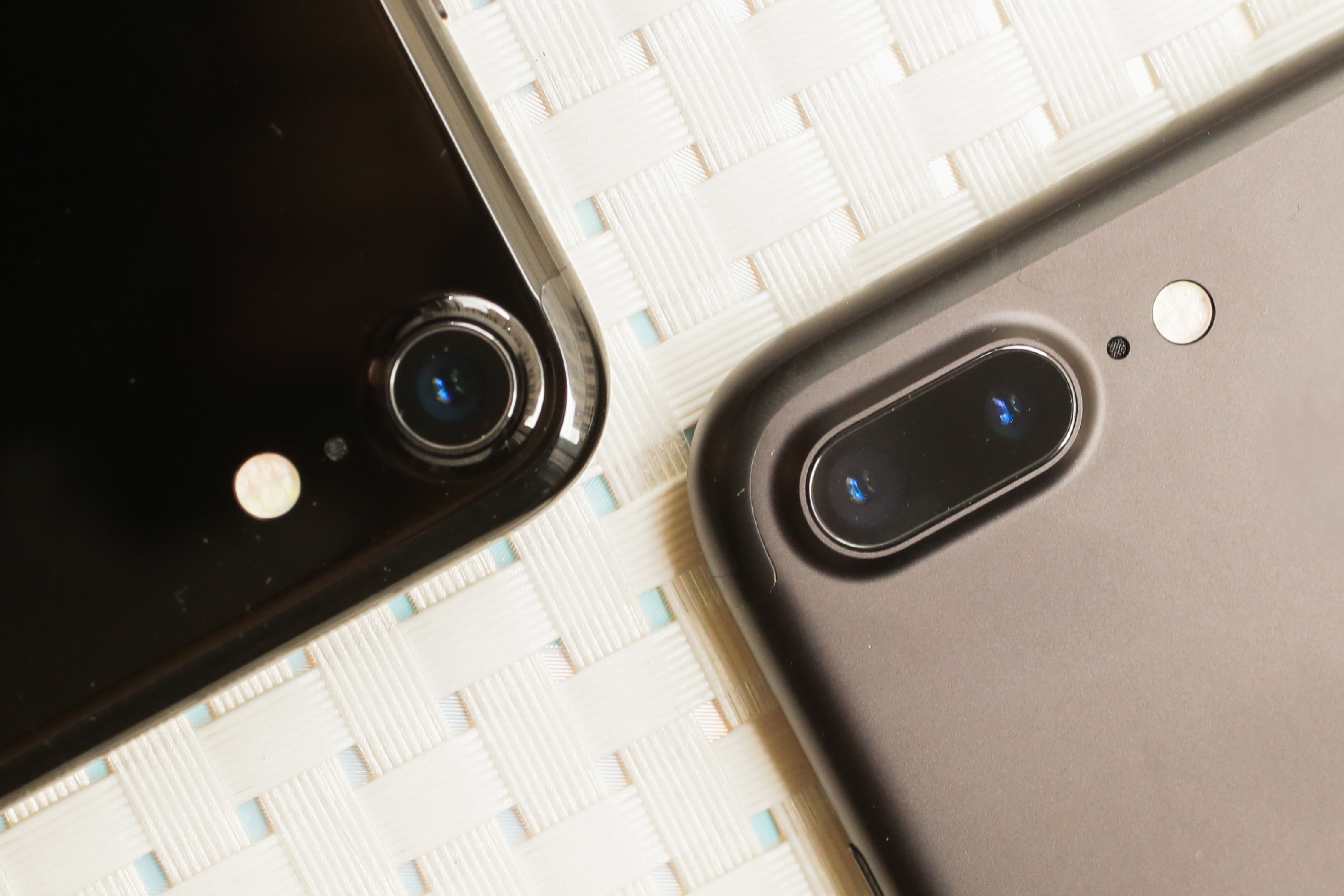
Enlarge Image
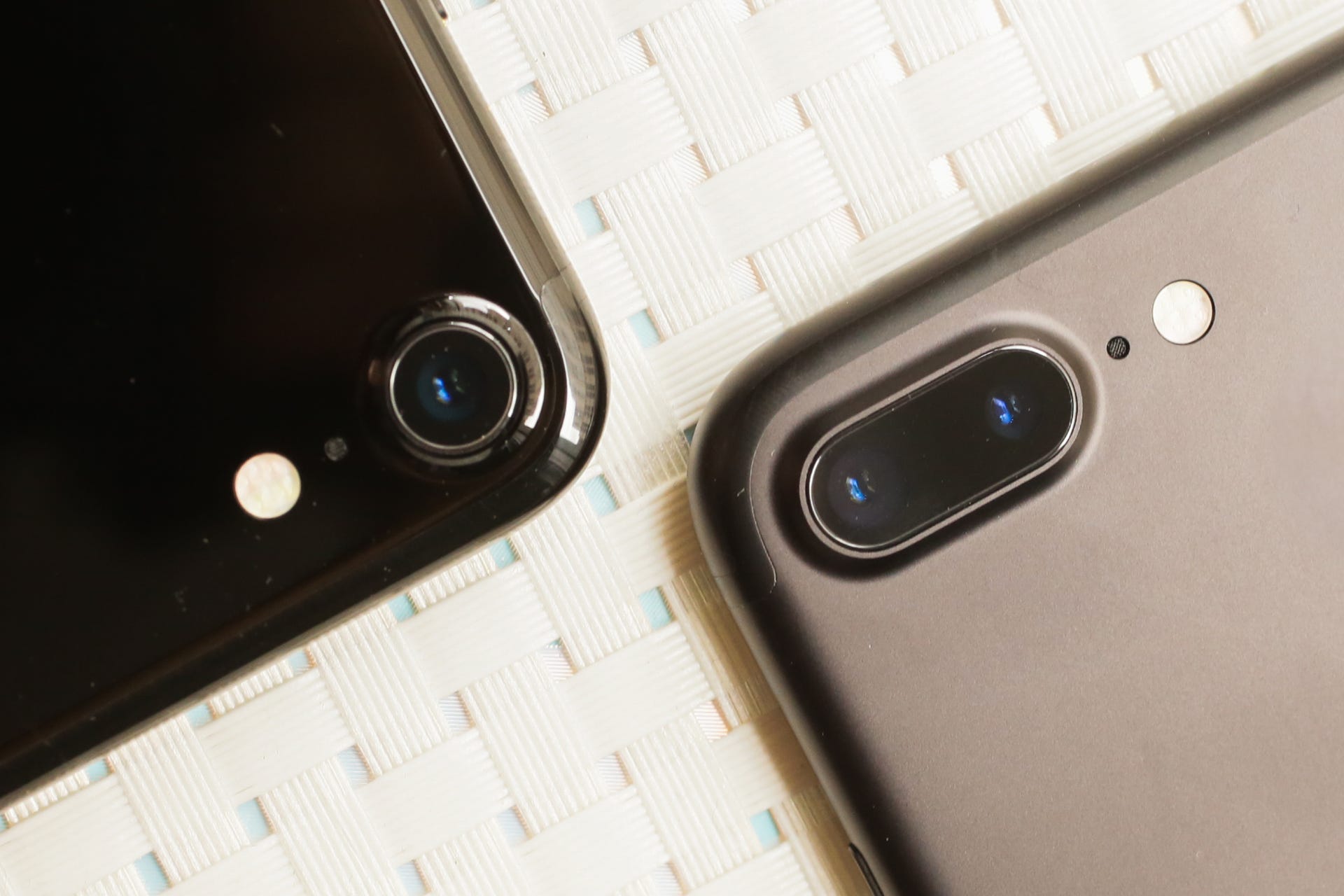
As Spinal Tap would say, the new jet-black variant (left) is “none more black.”
Apple added new colors this year, too. Now the phone comes in two versions of black in addition to the existing silver, gold and rose gold colors. Regular black is matte, while jet black is a high gloss. Jet black, it turns out, is a fingerprint and scratch magnet. Mine is already peppered with microabrasions after just a few days. My suggestion: Don’t buy jet black if you care about scratches.
But if you’re looking at the iPhone 7 from the front, it’s almost impossible to distinguish from the iPhone 6 or 6S. That’s how similar the design is.
A home button that doesn’t click
Using the new home button, even after a week, feels weird. It’s been a hard adjustment.
I’ve clicked so many home buttons. The iPhone 7’s “button” is really a solid state circle that doesn’t move at all. It’s like the new MacBook trackpads, in a sense. Push down, and you get a haptic “click” that’s not quite as satisfying.
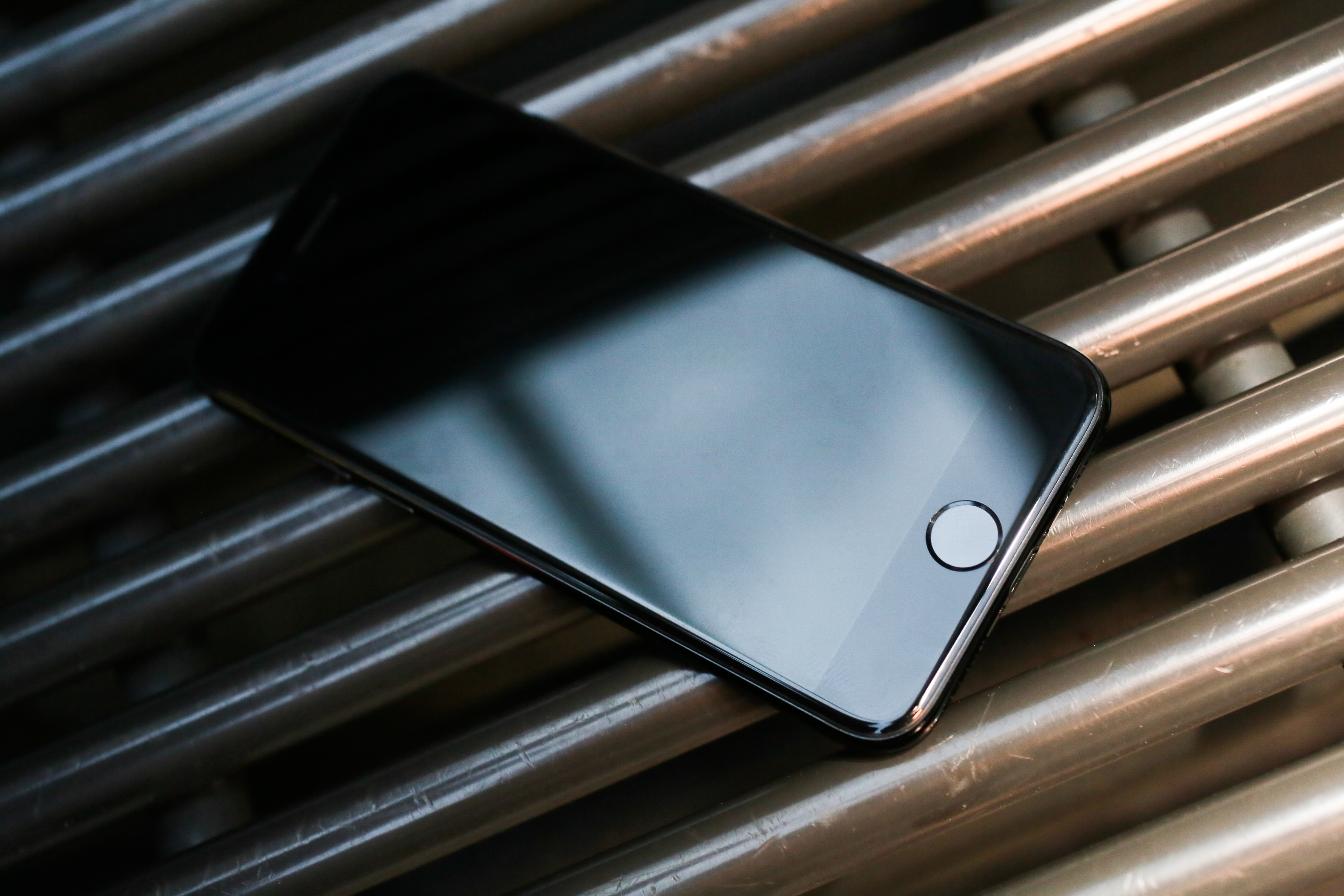
Enlarge Image
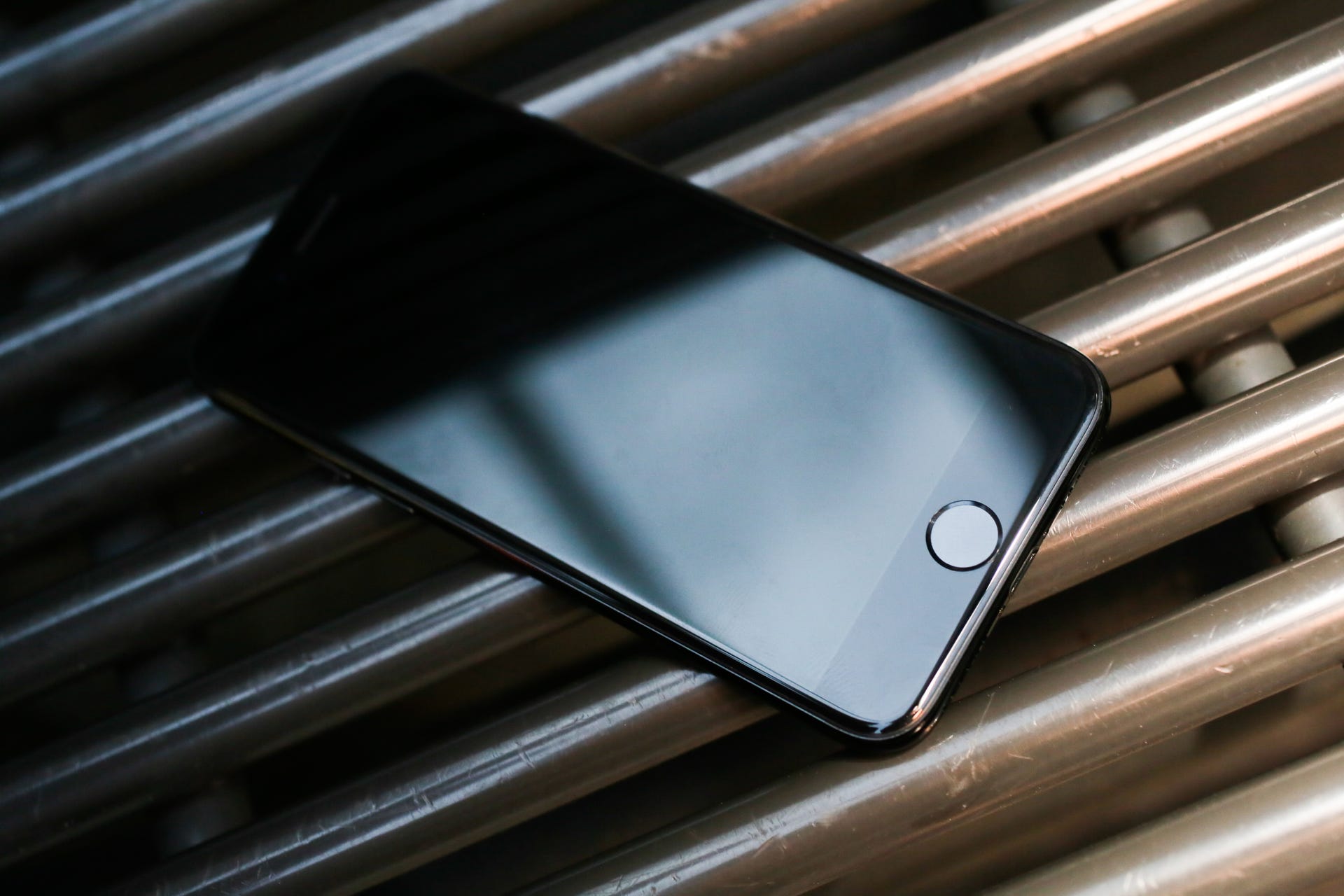
Say farewell to the satisfying click of the home button.
You won’t wear down the button, though, because it doesn’t move. And really, it feels a bit like 3D Touch — Apple’s new pressure-sensitive touchscreen tech introduced on the 6S and returning on the 7 — moved into the home button.
So if that home button is now just a flat surface, it also feels like a carrot on a stick to use 3D Touch more. I still don’t use it much, but iOS 10 uses it a lot more…and to some effective ends. There are so many ways to pull up apps from the home screen, or check info, that the home button really isn’t needed much. Now that the screen auto-wakes on lifting, that’s doubly true. I bet that home button will just disappear next year, with the fingerprint reader absorbed into the display. Why not?
Yeah, it’s really water resistant (but don’t go swimming with it)
Apple’s IP67 water-resistance rating on the new iPhone finally catches up to phones that have been dunkable for a while. Samsung’s Galaxy S7 can survive a drop in the sink. Even the supercheap Moto G4 can do it.
How water resistant is the iPhone 7? Apple calls it “splash and water resistant,” and by the way, IP67 means one meter of water for 30 minutes and complete dust resistance. But Apple also warns that any dip in salt water should be followed by an immediate rinse in fresh water. And also, you have to dry your phone for at least a couple of hours before charging (I’d err on the safe side with this).
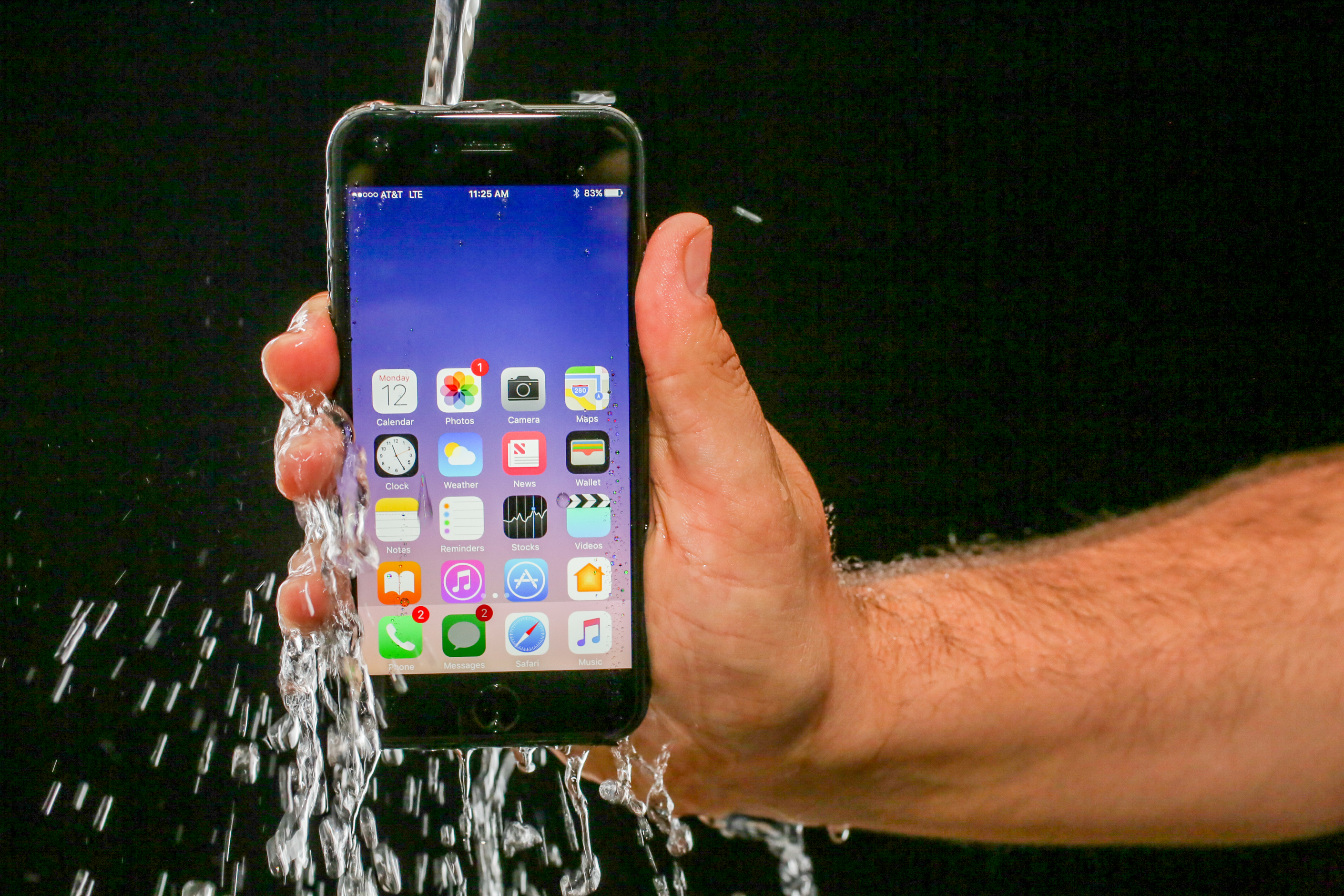
Enlarge Image
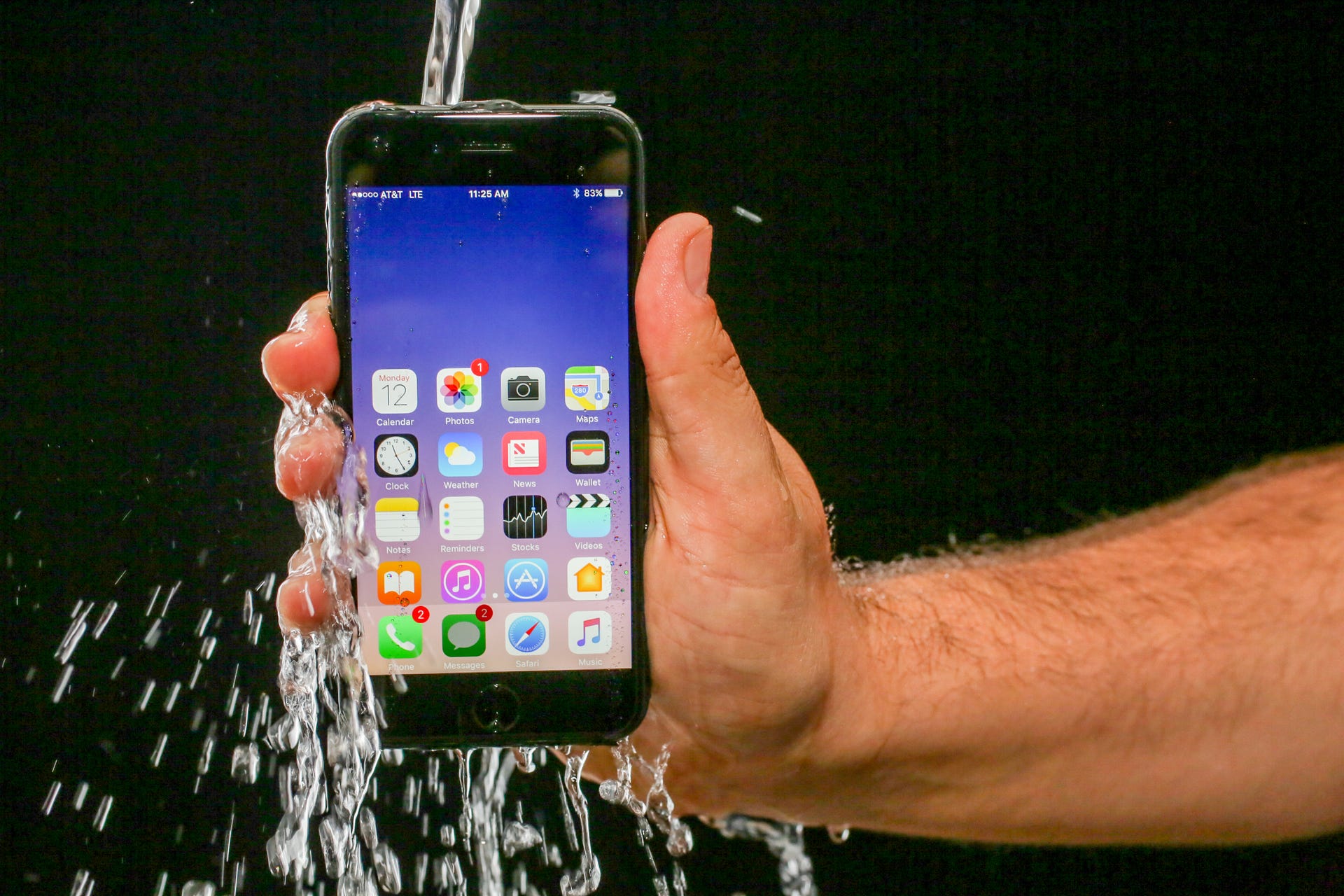
Apple finally takes the plunge and waterproofs its iPhones.
I took the iPhone 7 in the shower. I dropped it in a fish tank a few times. I put it in a sink and turned on the tap and filled the sink with the iPhone in it.
In more aggressive tests, we took the iPhone 7 a bit past its advertised aquatic limits: submerged at a depth of 1 meter in a pool of chlorinated water for a bit more than 30 minutes. In that case, the speaker quality got a bit mushy, but the phone was otherwise in working order.
Bottom line: the iPhone 7 should easily survive trips in rain and snow, as well as getting dropped in tubs, pools, sinks and other wet environs. But don’t tempt fate by leaving it in water for any longer than you have to.
Other small perks: Stereo speakers, a slightly improved display, buzzier haptics
I couldn’t appreciate Apple’s wider color-gamut display on the iPhone 7, which is supposed to the best next to the iPad Pro 9.7 and 5K iMac, as well as 25 percent brighter. It’s good, don’t get me wrong. But to my eyes, next to a 6S or 6S Plus, it felt the same. And in direct sunlight (I used it in seriously bright New York September sun), it was sometimes hard to see. Like all iPhones, but not really better.
The speakers sound louder. They surround the left and right sides of the iPhone now, instead of a single speaker down by the home button. It’s better for casual game playing or movie watching, but I’d take headphones every time. Or, if I was sharing with someone, I’d pick a larger screen. They don’t always sound as defined and crisp as I’d like.
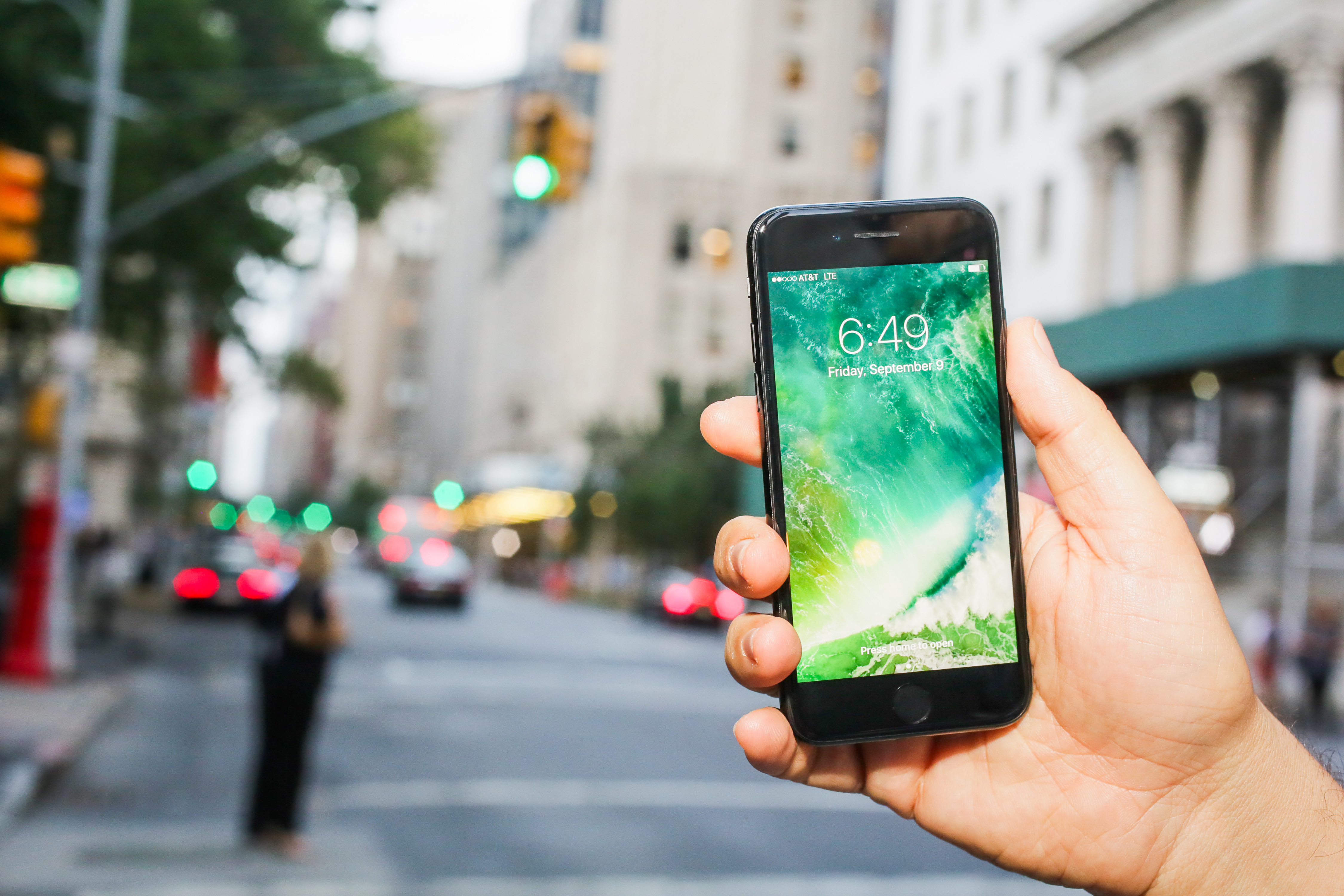
Enlarge Image
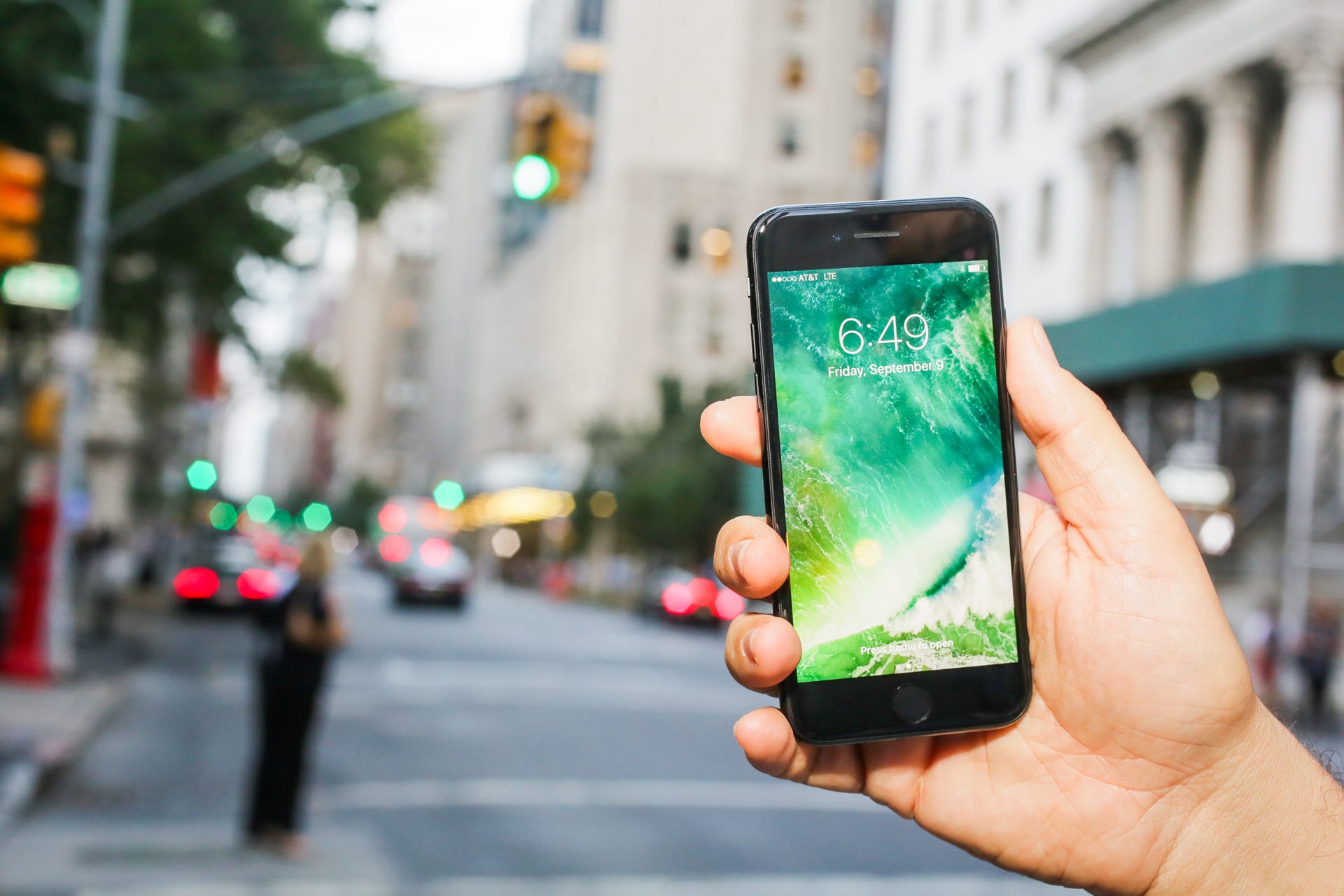
The display is still a bit difficult to view in direct sunlight.
The best improvement of all might be haptics: the vibrations, or rumbles, or taps, or throbs the phone makes in response to your actions. Apple updated the “Taptic Engine” in the iPhone 7, which makes all the vibrations seem sharper and more defined. The silence mode is now a quick tip-tap. Pushing in on 3D Touch icons (if you even do that) throbs more readily. Some sounds and settings now come with phone-rumbling enhancements. Change the clock time, feel the click of the wheel as you spin it. It means that more tactile feedback is possible, even in apps with onscreen buttons. It’s like a phone-wide Xbox One rumble pack.
Nice camera bumps, especially in low light
The iPhone 7 gets an upgrade I wished were in the 6S — namely, optical image stabilization (or OIS). The slightly wider f1.8-aperture lens also lets in more light for low-light photos. OIS and that new lens both make a difference in everyday shots, I’ve found. Photos at dusk in my backyard that were barely viewable on the 6S looked far brighter on the 7.
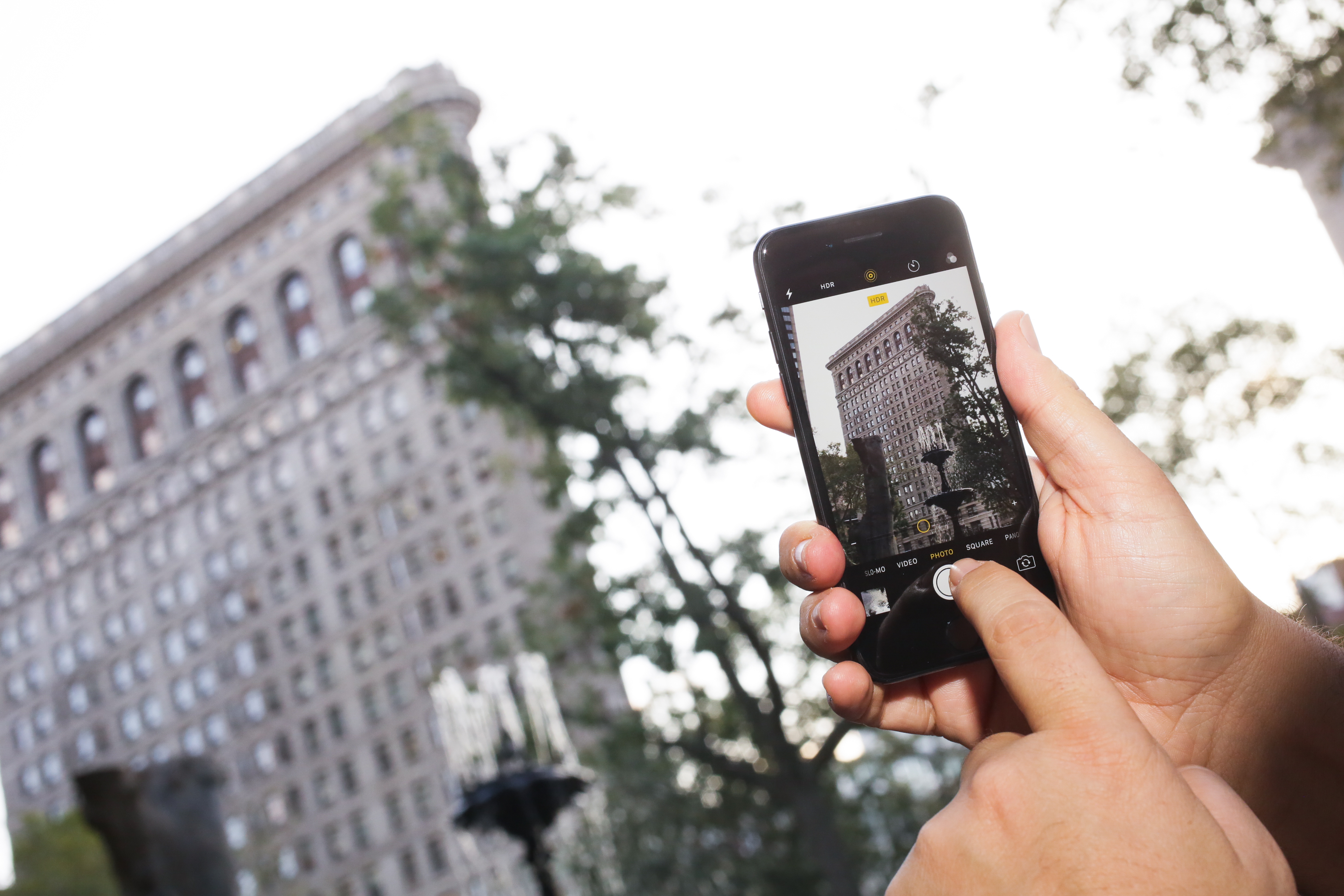
Enlarge Image
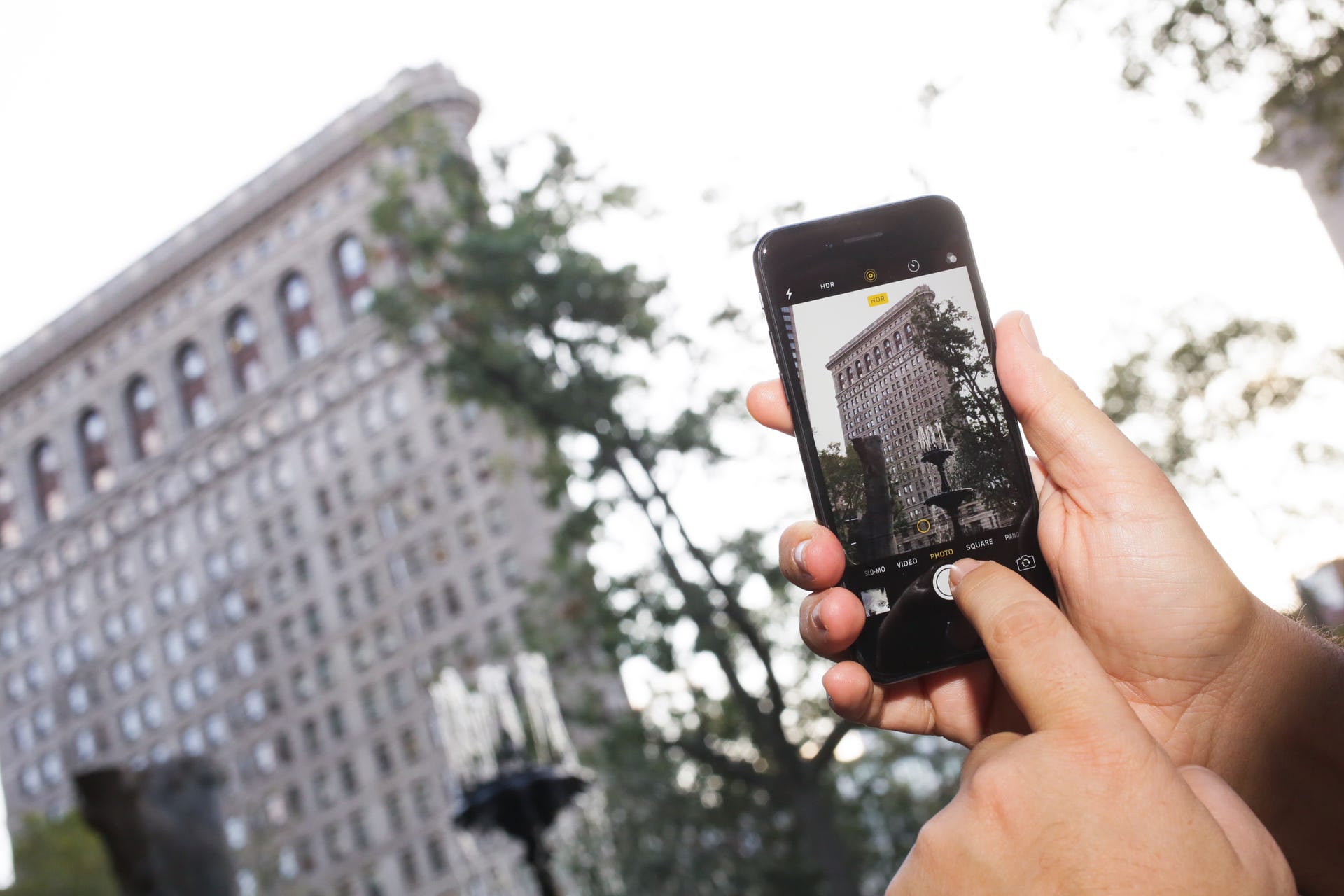
With OIS, you can capture clear photos even if you have an unsteady hand.
The 12-megapixel camera’s other improvements, including a new ISP for other image improvements, might be too subtle for casual point-and-shooters to appreciate. The four-LED flash is brighter, and helped light up a room so well I could even shoot a barely passable photo of the darkened room next door. Note that Live Photo slows down the shutter speed, so turn it off for faster shots.

Enlarge Image

This photo was taken at dusk, and it was so dark I couldn’t see the lawn. Big step up from 6S.
The front-facing FaceTime camera has been bumped to 7 megapixels now, and it looked great for selfies or videos. With one small caveat: I found that some shots seemed a little washed out in the background even with HDR on in my early review unit.

Enlarge Image

That’s a red Shake Shack tomato.
However, I still found that the I preferred the iPhone 7 Plus camera. Part of that is obvious: It has a dual camera on the back that allows for 2x optical zoom or extra levels of digital zoom. It also has a really cool portrait mode that keeps the foreground subject in focus while blurring the background. And the added screen size is more useful for looking at photos and editing them.
Super fast
The iPhone 7’s new processor, called the A10 Fusion, promises another significant set of speed bumps with two cores. There’s also a new wrinkle: A lower-power battery-optimizing mode with two other cores. In classic Apple fashion, the phone switches between these cores automatically and you can’t tweak it.
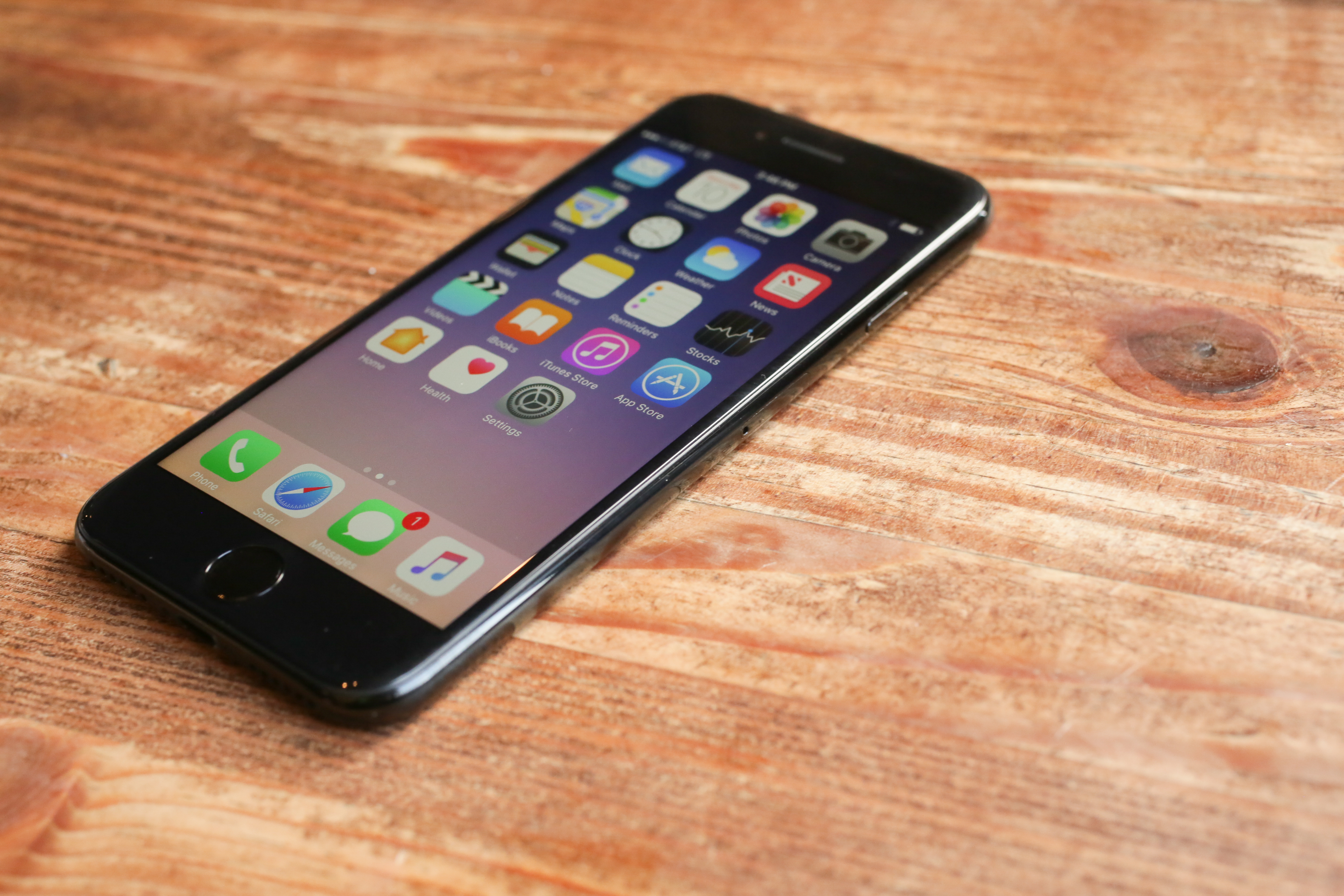
Enlarge Image
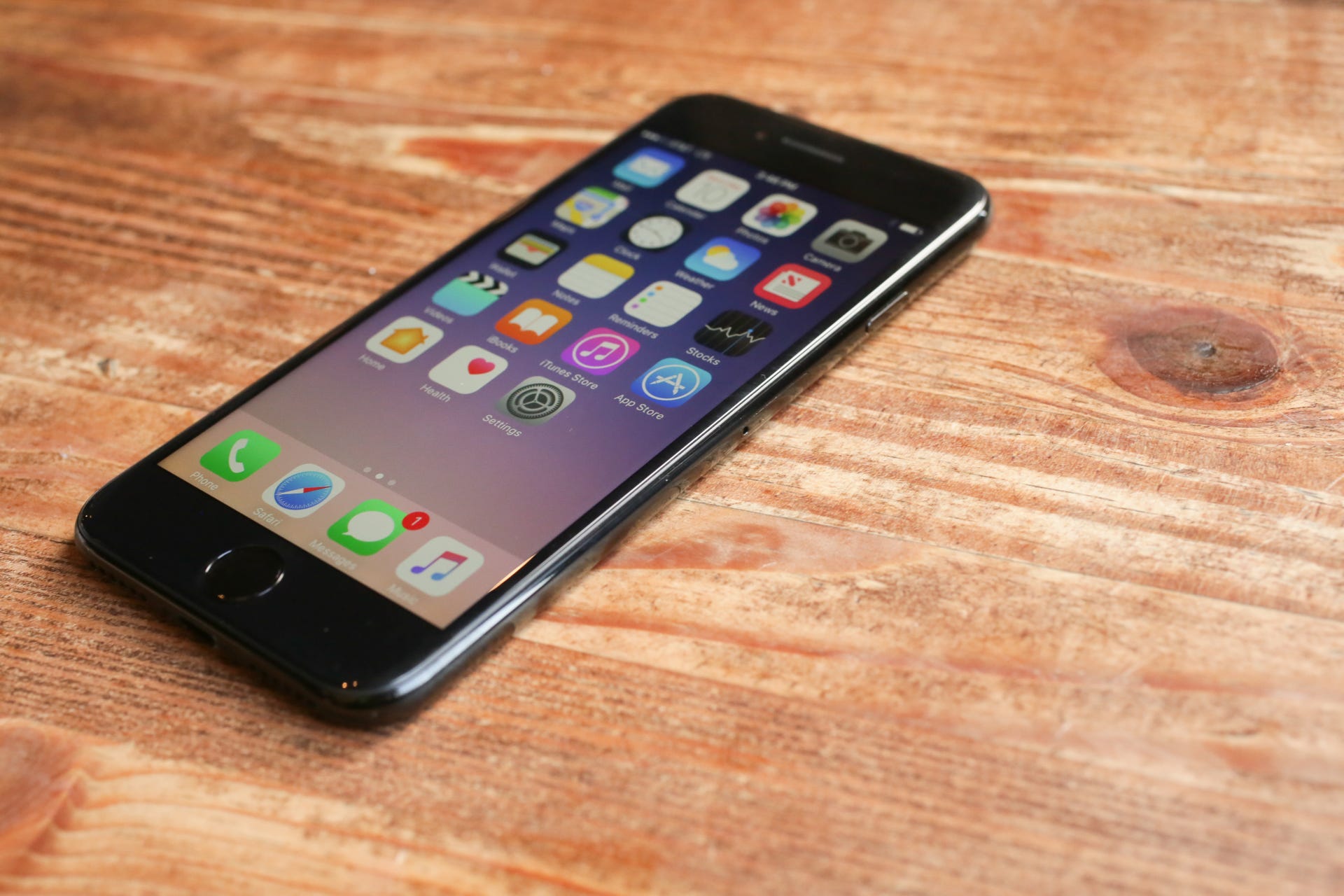
The iPhone 7 is equipped with an A10 Fusion processor.
In a few benchmarks using GeekBench 4 (an updated version of the no-longer-available GeekBench 3 that we use to test phones), the 7 made big gains (3,488 single-core, 5,605 multicore in case you’re curious).
The phone is seriously fast. It’s faster than any other iOS devices including the iPad Pro, and faster than Samsung’s last batch of phones by a significant margin, faster than Google’s
Pixel
phone. But I have to say — as I do many years — that this iPhone feels about as fast the last iPhone in most everyday instances. You don’t need all this speed, but this iPhone is a speedster in the phone world without a doubt.
Someday, maybe, we’ll see phones stop getting relentlessly faster every year. For now, it’s something to appreciate. But I wouldn’t drop everything and get this phone just for any promised speed gains.
Battery life: Minor gains
It’s hard to judge Apple’s battery-life claims on the iPhone 7, because a lot of what’s being touted involves low and high-power performance management that happens automatically in Apple’s processor, and can’t be adjusted in settings.
It also took us a while to figure out how best to test battery life on this iPhone.
Our battery life test involves a video playback loop in airplane mode, which doesn’t reflect everyday use cases for how most people would use an iPhone. But on that test, using .1, the iPhone 7 lasted around 10 hours, 45 minutes — a bit better than last year’s iPhone 6S, but not by much. Android phones like the Samsung Galaxy S7 and Google Pixel both fared a lot better on our test.
And, as Apple’s own claims suggest, your mileage may vary depending on how you use the phone. I still find myself needing a top-off charge around 4 p.m. That being said, I found the iPhone 7 eking out better battery life through the day, lasting me a little longer than before. I’d say the difference is subtle. With Apple’s new power-managing processor, what you do will possibly cause different results.
Apple’s attentiveness to more power-efficient processing is promising. But lots of great phones now have supersize batteries in them: think of the Motorola Moto Z Play, the OnePlus 3T and Galaxy S7. If you want an even better battery, consider the iPhone 7 Plus, a battery pack, or another phone.
Geekbench 3
Apple iPhone 7
3,495
5,931
Apple iPhone 7 Plus
3,493
5,932
Apple iPhone 6S
2,527
4,402
Samsung Galaxy S7
1,698
3,935
Google Pixel
1,602
4,241
- Single-Core
- Multi-Core
Note: Longer bars indicate better performance
Battery test-local video playback
Samsung Galaxy S7
960
Google Pixel
792
Apple iPhone 7 Plus
726
Apple iPhone 7
655
Apple iPhone 6S
630
Note: Longer bars indicate better performance
3DMark Ice Storm Unlimited
Apple iPhone 7 Plus
36,625
Apple iPhone 7
36,573
Samsung Galaxy S7
29,031
Google Pixel
28,081
Apple iPhone 6S
27,698
Note: Longer bars indicate better performance
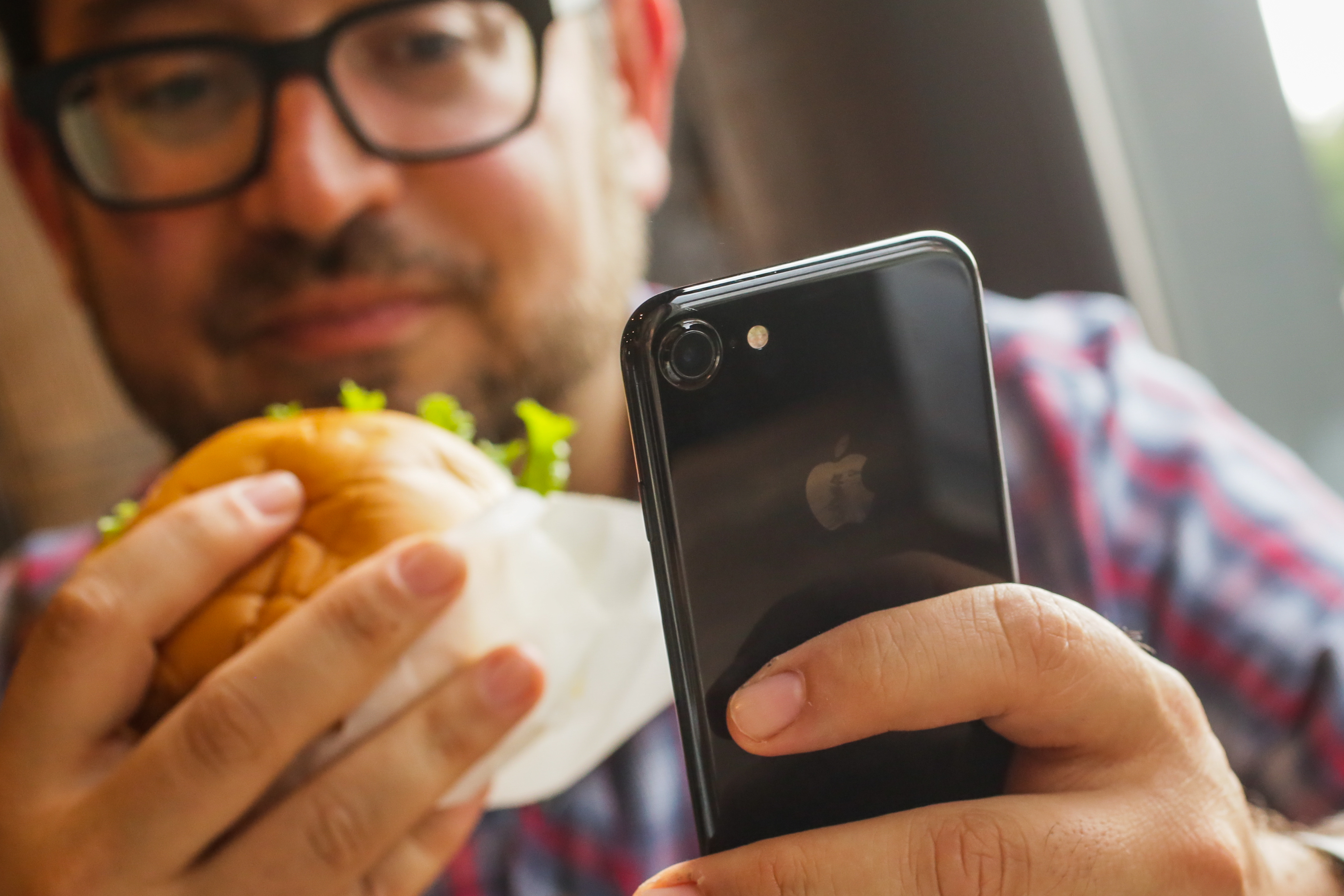
Enlarge Image
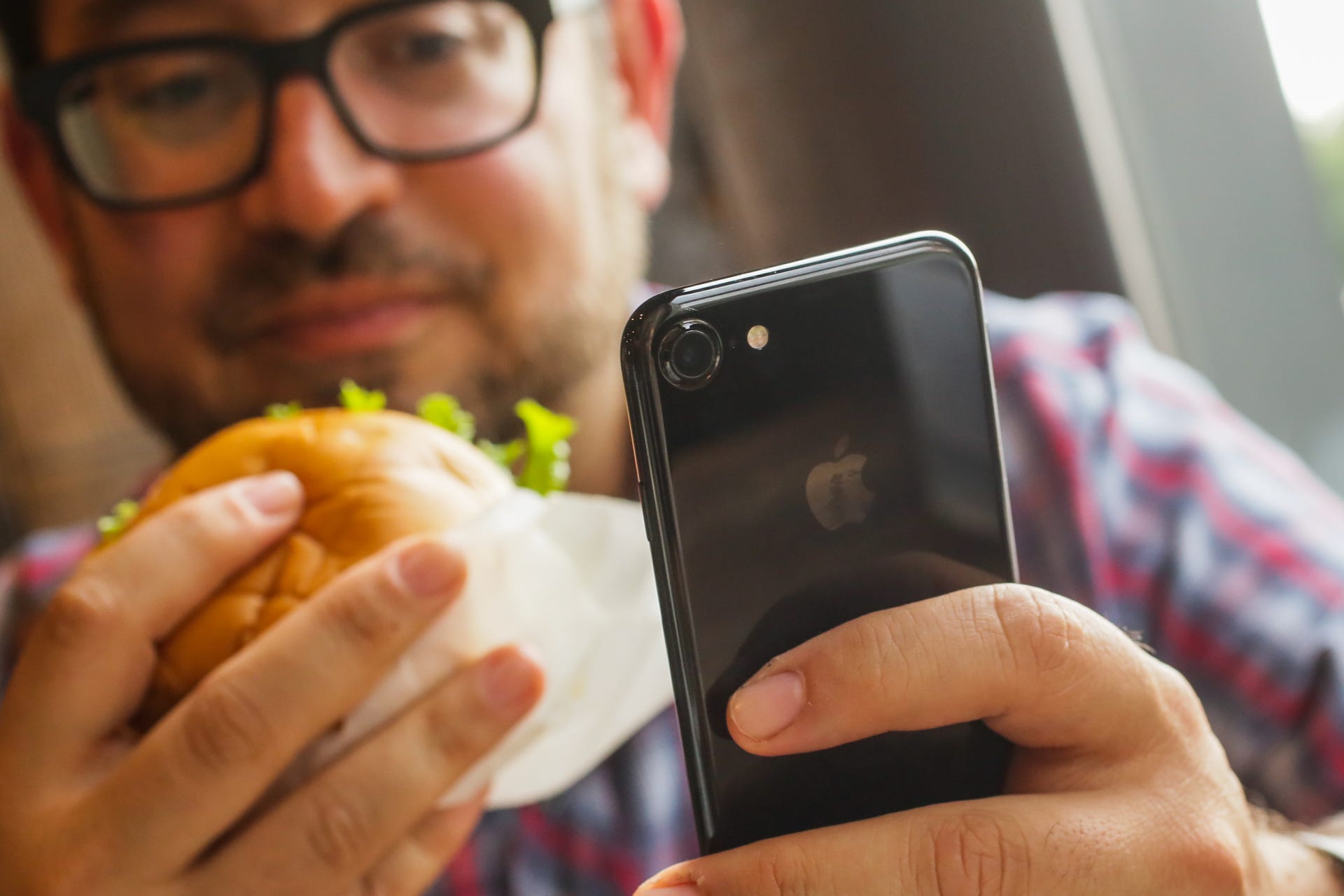
With the iPhone 7, you can go all day without a recharge.
More storage
All the iPhones finally got storage upgrades. Now $649, £599 and AU$1,079 will get you 32GB, and after that $749, £699 and AU$1,229 for 128GB and $849, £799 and AU$1,379 for 256GB. 32GB is the bare minimum I’d recommend anyone get for a phone that lacks expandable storage. I’m sad that 64GB went away.
256GB seems like an insane amount unless you’re a filmmaker and live off your iPhone. Shooting in 4K chews up space, and 256GB isn’t unrealistic at all if you’re out recording a day’s worth of video footage.
Apple iPhone 7 and 7 Plus storage and pricing
ModelStorageUSUK AU Apple iPhone 7 32GB$649£599AU$1,079
128GB$749£699AU$1,229
256GB$849£799AU$1,379Apple iPhone 7 Plus 32GB$769£719AU$1,269
128GB$869£819AU$1,419
256GB$969£919AU$1,569
Hub to the connected world
Phones are hubs. They’re utility devices. They’re essential. Some people want a phone that’s totally swappable, fixable, functional. Some want great battery life. Some want an awesome camera or a huge display. Some want weird things. Some want something easy. There’s no right answer. It’s complicated now, but in a good way. Most phones do a better job now than anything that ever existed before.
Our favorite phones at CNET are those that mix great utility and awesome design. Now along comes the iPhone 7, and it’s…well, it’s kinda boring.
The iPhone is what it is: A highly designed, perfected fusion of hardware and software. This version is better than before.
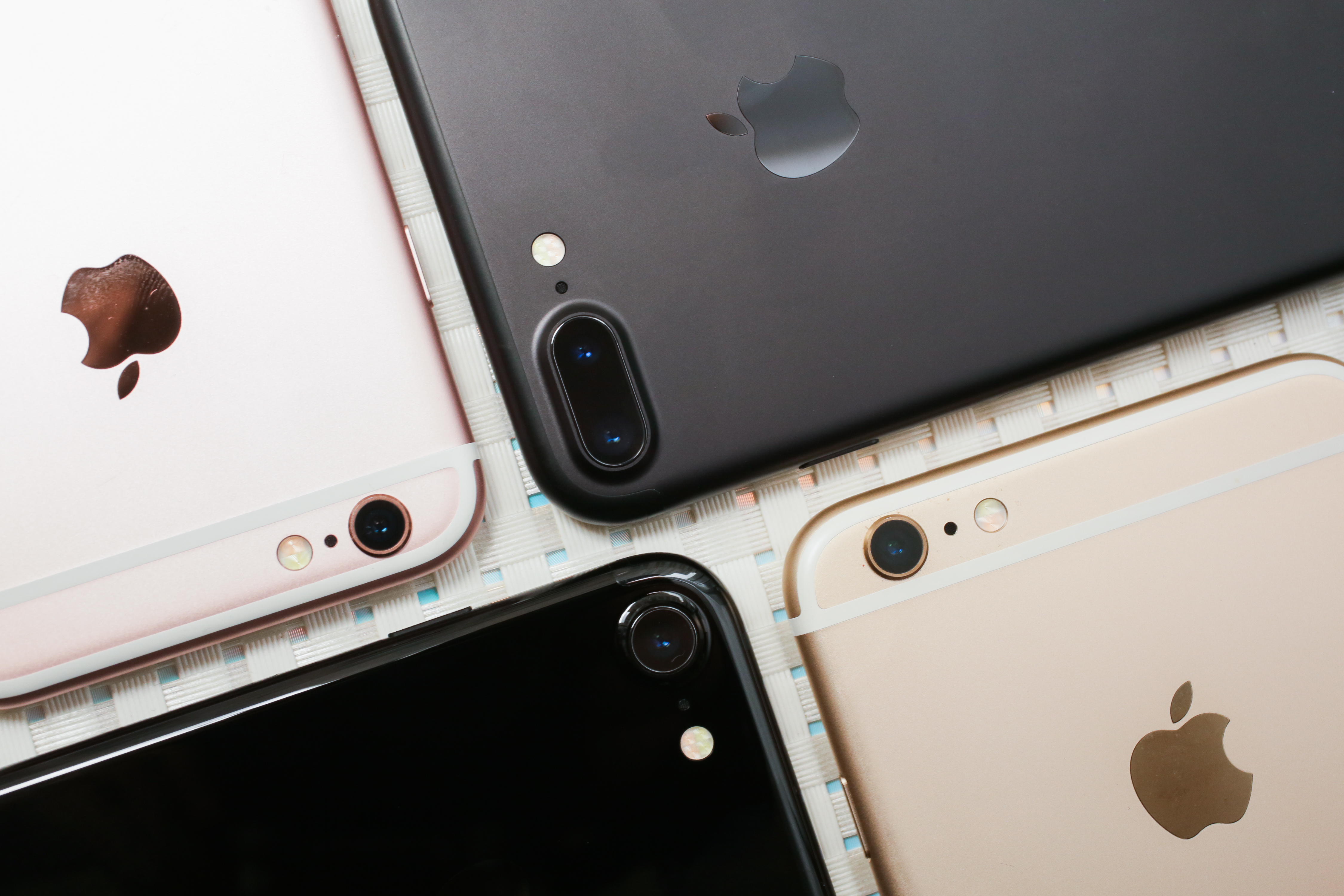
Enlarge Image
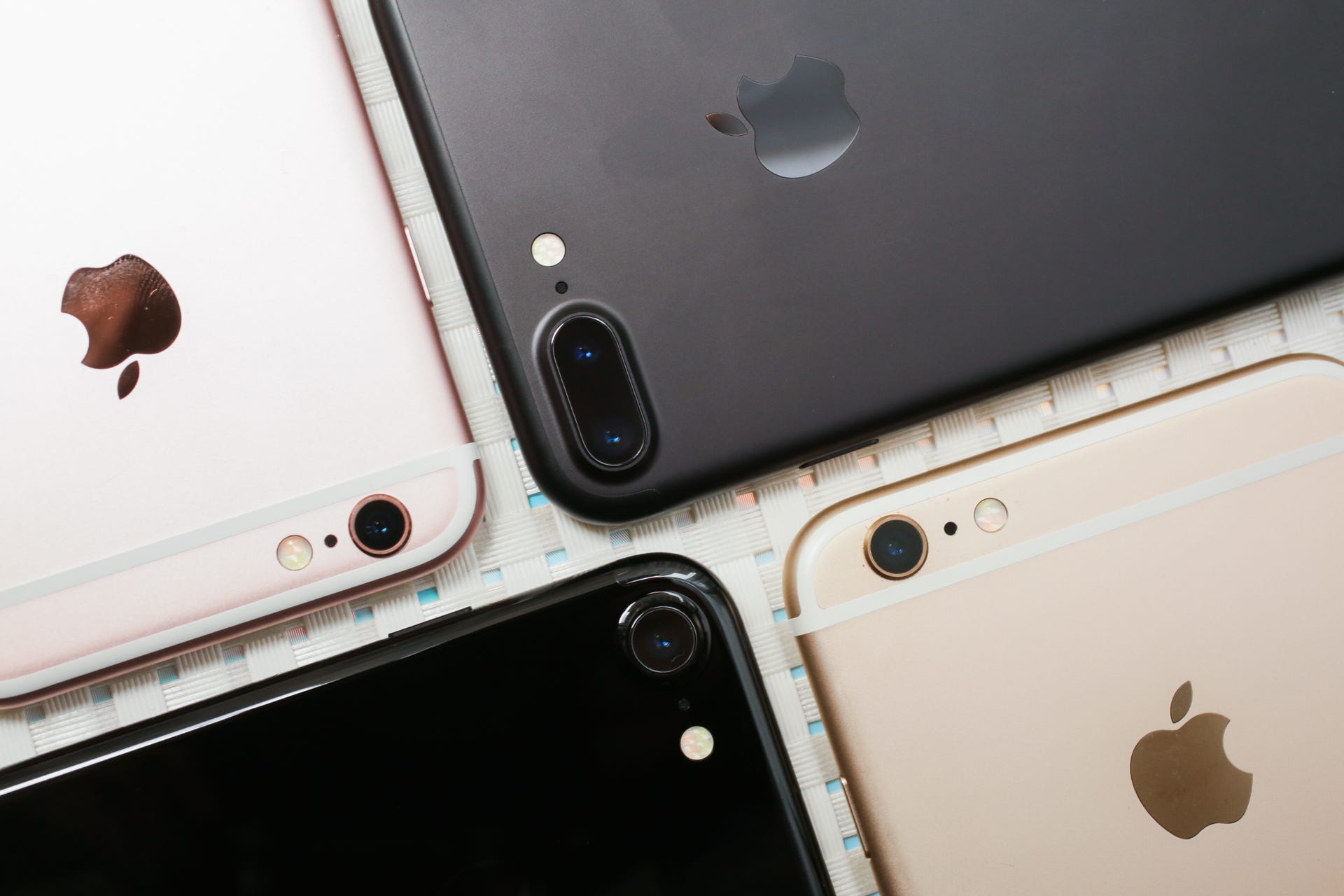
The new iPhone 7 is great, but it’s not the most radical handset we’ve seen from Apple.
Phones are already the way we connect with tons of things around us. I spend my time with dozens of wireless wearable
peripherals
. Apple’s pushing its own versions more than ever: AirPods, the Apple Watch and probably more things to come. Virtual and augmented reality, perhaps. A whole universe of connected smart-home gadgets.
The iPhone is the thing at the center. And this one’s better overall. But if you want something that looks and feels different, wait ’til next year. Or, go elsewhere. Nearly every other phone, including Apple’s still-excellent iPhone 6S, still has that comfy old headphone jack.
That might change very soon, though, across the smartphone landscape. And the iPhone might change radically with it.
This iPhone feels like it’s laying the groundwork for a more sealed-off, improved, wireless system. In the meantime, it’s a little bit boring.
I’m OK with that if it’s reliable. This year’s upgrade isn’t something you need to have. But its improvements are likely doing some subtle paving of the way toward changes in another iPhone next year.
If you care about better photos, and want to be a little more future-proofed for whatever Apple has in store for that dual camera, seriously think about getting the 7 Plus.






